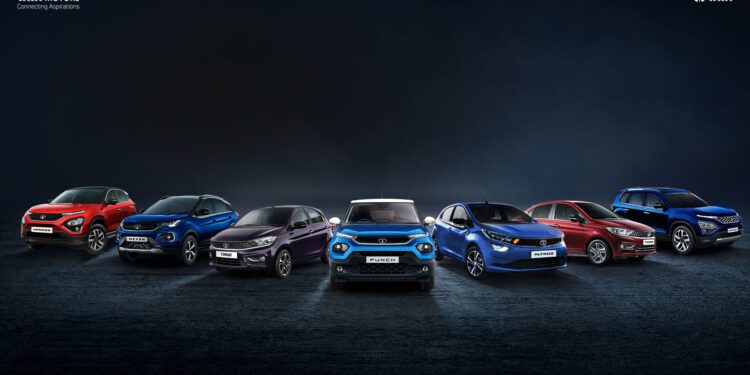Autocar Exclusive | “You will be astonished by the pricing of our upcoming products,” remarks N Chandrasekaran
Tata Sons Chairman discusses the company’s forecasts for electric vehicles, other sectors, JLR, and beyond @hormazdsorabjee @TataCompanies @autocar https://t.co/e9KSs13YXt
— ET NOW (@ETNOWlive) September 11, 2024
Tata Motors, a prominent player in the global automotive industry, experienced a nearly 5.5 percent drop in its stock during early trade today, hitting 978.70. This marks the eighth consecutive trading day of losses, dropping the stock below the ₹1,000 threshold for the first time since the end of July. The decline is attributed to a recent report from UBS Securities, which reiterated a ‘sell’ rating on the shares, setting a target price of ₹825 each.
This target indicates a potential drop of 20.3 percent from Tuesday’s closing value.
Stocks On Radar | UBS continues to suggest Sell for Tata Motors with a target price of Rs 825. What does @nikunjdalmia have to say? Tune in! pic.twitter.com/2uKAJnOIHF
— ET NOW (@ETNOWlive) September 11, 2024
UBS raised concerns regarding the possibility of additional declines, influenced by margin pressures facing the company’s premium division, Jaguar Land Rover (JLR), as well as issues within the domestic passenger vehicle market. They highlighted that JLR’s strategy of prioritizing higher-margin vehicles during the semiconductor crisis significantly increased their average selling prices and gross margins, pushing them from £49,000 with a 26.7 percent margin in FY 2020 to £72,000 with a 31 percent margin in FY 2024.
Predicts. Reacts. Protects.
Featuring Autonomous Emergency Braking System in Tata CURVV with Level 2 ADAS.Bookings Now Open – https://t.co/wyq07k6E7U#TataCURVV #CURVV #SUVCoupe #ShapedForYou #TataMotors #TataMotorsPassengerVehicles pic.twitter.com/QnkZPoFltH
— Tata Motors Cars (@TataMotors_Cars) September 11, 2024
This strategic pivot, along with diminished sales incentives, provided JLR a competitive edge against its rivals, helping it withstand weaker sales figures in China. However, UBS pointed out that the demand for these luxury vehicles is tapering, with current orders slipping below pre-COVID levels. This hints at a possible slowdown in JLR’s recent achievements, and UBS anticipates that discounts on the Range Rover will increase.
As per the Q1FY25 earnings report, the order backlog for JLR has decreased to 1,04,000 units, down from 1,33,000 vehicles in Q4FY24. In the June quarter, Jaguar Land Rover posted revenues of £7.3 billion, marking its highest first-quarter revenue to date, a 5 percent increase compared to the June quarter of FY24. The yearly increase in profitability was linked to favorable volume, mix, and improvements in material costs; however, higher marketing costs compared to the prior year dampened some gains.
Since releasing its Q1FY25 results in early August, the stock has been in a decline.
Tata Motors stock experiences significant drop
Despite reporting commendable figures, the company’s management conveyed cautious optimism regarding the rest of FY25.
The stock concluded August with a 4 percent plunge and continues to face challenges. The company anticipates production hurdles for JLR in Q2 and Q3 due to an annual summer plant closure and supply chain disruptions caused by flooding impacting a significant aluminum supplier. In the domestic market, Tata Motors expects an uptick in demand during the festive season.
Total passenger vehicle sales in August reached approximately 44,500 units, reflecting a 3 percent year-over-year decline and a 1 percent month-over-month decrease. Manufacturers are grappling with lower consumer spending, which has led to a considerable inventory buildup. Dealers are having difficulty moving existing stock, prompting leading automakers to provide discounts on sought-after models to expedite the reduction of unsold inventory.
Although these discounts aim to stimulate sales, there are worries about their detrimental impact on profit margins. Recently, Tata Motors has elevated festive discounts to as high as ₹2.5 lakh on all petrol, diesel, and CNG cars and SUVs, additionally considering consumer advantages up to ₹45,000 on popular models.
The opinions and suggestions presented in this article reflect the views of individual analysts. These do not necessarily represent the perspective of Mint. We recommend that investors consult with certified experts prior to making any investment choices.


